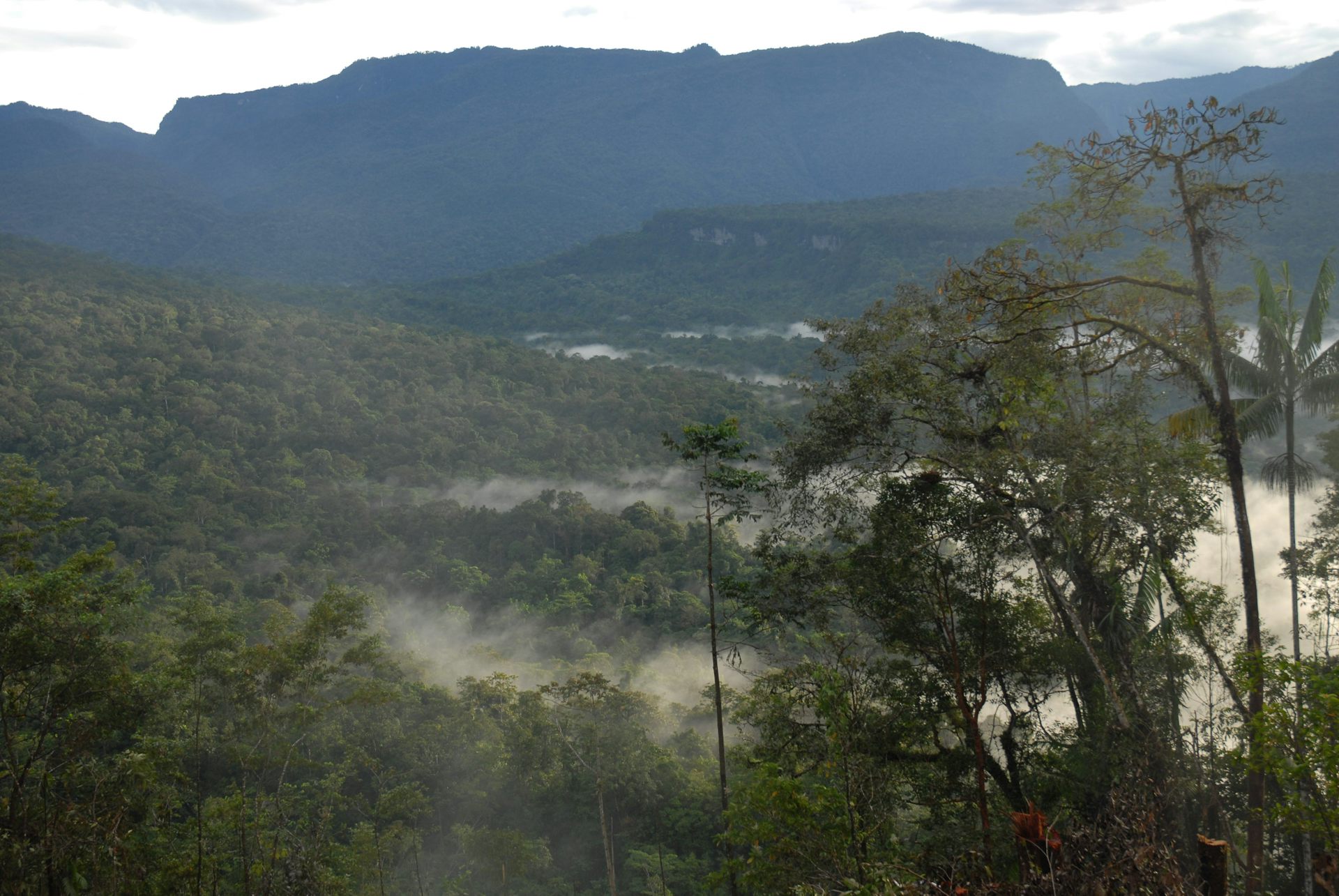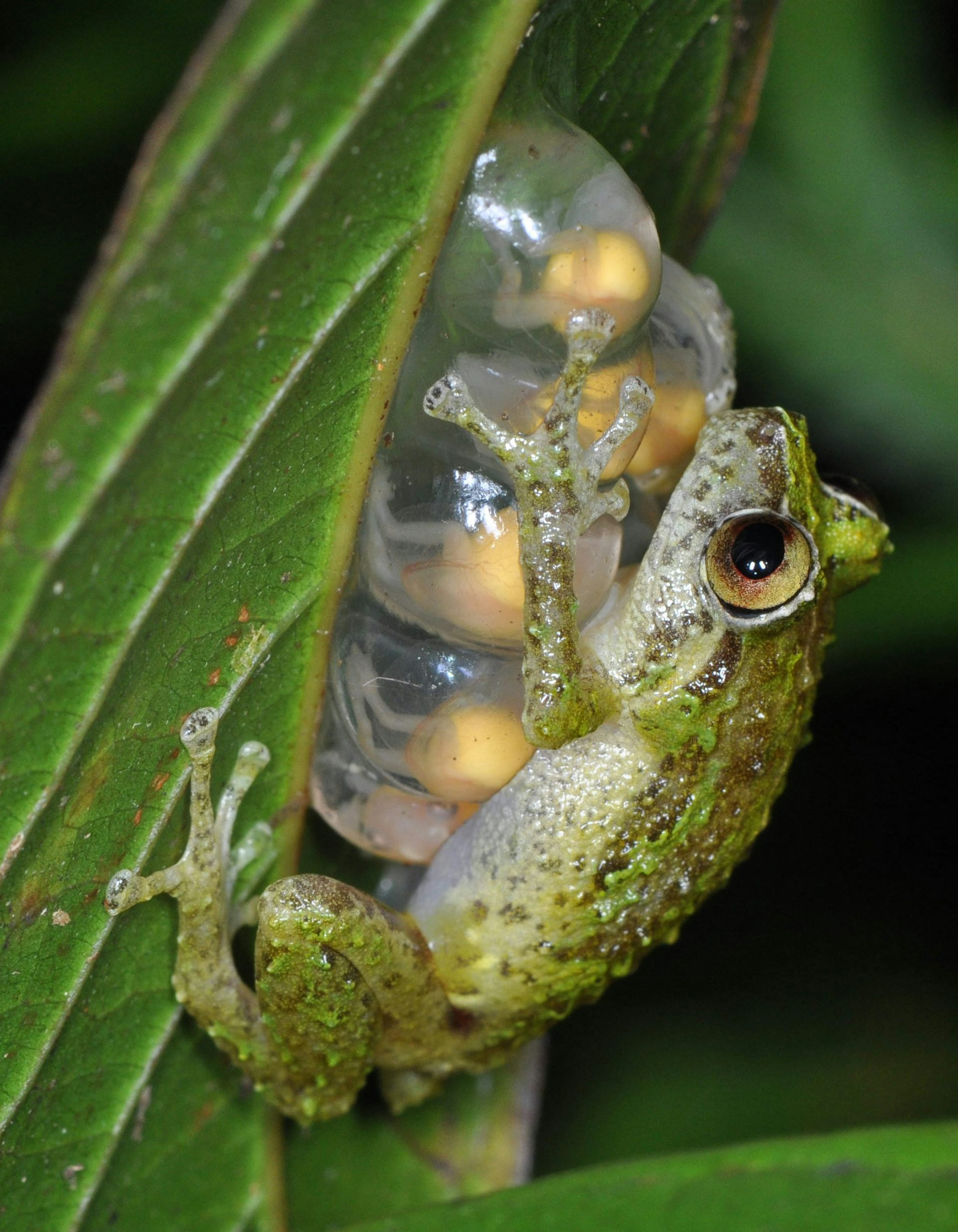After spending several days writing about unintelligent and malevolent design, and preparing a video summarising the arguments against the intelligent design hoax (and not missing a chance to promote my book on the subject), it makes a change to be able to write about some of my favourite creatures, frogs. The frogs of Melanesia in fact, and especially why there are so many species, sometimes in a very small area.
Although 'writing' is a slight exaggeration since most of this blog is unashamedly reprinted from The Conversation. The Conversation is a free online magazine written by experts in their field and dealing with a wide range of topics. It is well worth subscribing to and supporting with a donation, if you value the truth and appreciate good writing.
This article was written by Paul Oliver, a postdoctoral Researcher in Biodiversity and Evolution, Griffith University, Brisbane, Australia, and Deborah Bower, a lecturer in Ecosystem Rehabilitation, University of New England, Sydney, Australia. It is reprinted here under a Creative Commons license, reformatted for stylistic consistency. The original article can be read here:

Gliding treefrogs, mini-males and burrowing frogs in trees: why Melanesia is the world’s tropical island frog hotspot
Paul Oliver, Griffith University and Deborah Bower, University of New England
A chocolate treefrog that looks like a Freddo. Burrowing frogs which live in trees. Long-nosed frogs named after Pinocchio. Frogs which go straight from egg to froglet without stopping at tadpole. And large treefrogs which can glide from tree to tree.
All these and many more are found only in Melanesia. This tiny region in the South Pacific is a global hotspot of cultural and biological diversity. And we still don’t know the full extent of its extreme biological riches.
Centred on the world’s largest tropical island, New Guinea, Melanesia is home to 534 types of frog. As our new research shows, that’s 7% of all the world’s frog species living on just 0.7% of the world’s land. And there are more to come. Almost 40% of these frogs have only been scientifically described in the last two decades.
Hundreds more species will likely be added to the tally, as we know of at least 190 species not yet formally described. The final tally will be over 700, with frogs colonising every possible niche. But their sheer evolutionary inventiveness also puts them at risk, with many species restricted to tiny ranges.

Litoria pinnochio is just one of over 200 species of Melanesian frog first documented in the last 20 years. Males of this species have an erectile spike at the tip of their snout.
Credit: Tim Laman
Winged fingers, erectile noses and tiny males
Melanesia’s wealth of frog species easily surpasses other tropical island regions, including famed hotspots such as Madagascar (around 370 species), Borneo and the Caribbean (both around 200).
On these islands live more than double Australia’s tally of around 248 species).
Species diversity goes hand-in-hand with weird and wonderful evolutionary twists.
Take the narrow-mouthed frogs, which skip the tadpole stage and hatch directly from egg to frog. In this family, Microhylidae, is the likely ancestor of most of the region’s frog species after migrating from Asia around 20 million years ago. These frogs were spectacularly successful, calving off an estimated 400 species.
Their tally include some of the world’s smallest creatures with a backbone, as well as many burrowing frogs which abandoned the ground to live in trees, and others with complex parental care, such as the father frog guarding his eggs and tadpoles, or carrying babies on his back.

In New Guinea multiple lineage of frogs have independently evolved very tiny size. Pictured is Choerophryne gracilirostris, described in 2015.
Credit: Stephen Richards

Litoria mira bears a strong resemblance to a popular kid’s sweet, hence the common name Chocolate Treefrog.
Credit: Stephen Richards
Why so many frogs?
Melanesia’s many islands have fertile soil and often have extraordinarily varied landscapes. New Guinea, for instance, goes from sea level to highlands and mountains almost five kilometres high, with a few peaks still holding their last ice.
This is a key reason for frog diversity. Why? Because populations can easily become isolated, which speeds up the development of new species. New Guinea, for instance, is one of the world’s megadiverse hotspots, containing an estimated 7% of the world’s species on a fraction of the land area.

Complex landscapes increases the chance populations will become isolated and ultimately evolve into separate species.
Credit: Stephen Richards
These frogs don’t have free-living tadpoles able to be dispersed by floods or along streams. This stay-at-home disposition may increase their chances of becoming isolated and evolving into distinct species.
Our research found direct-developing frogs in Melanesia have narrower ranges than their more conventional relatives.

Frogs without a free-living tapdole stage tend to have restricted ranges. Shown here is Oreophryne oviprotector, described in 2012.
Credit: Stephen Richards
Melanesia is a good place to be a frog – but threats are arriving
The world’s frogs are in trouble. Hundreds of species have gone extinct in recent decades.
But Melanesia, for now, is a good news story. We know of no frog extinction events and only 6% of species are threatened, compared to a global average of over 30%).
This could change if a lethal fungus takes hold. So far, Melanesia has stayed clear of it. Biosecurity measures are essential to conserve this bounty of frogs.
Because so many of Melanesia’s frogs have tiny ranges, they are particularly vulnerable to changes, such as logging a small area of forest. Climate change will pose an existential threat, particularly to frogs dependent on cold climates in the mountains.
PNG’s eastern biodiversity hotspot around Milne Bay is most at risk. Six species are threatened here by logging, while plans for oil palm plantations threaten many frog species.

Logging forests around Mt Simpson near Milne Bay threatens at least six recently described frog species.
Credit: Fred Kraus
We hope documenting Melanesia’s wealth of frogs and other species will help conservation efforts. This region is special. Let’s keep it that way.
If the geography tends to create isolated environments such as islands, inaccessible valleys or isolated mountain peaks, then this encourages isolated populations. In the case of these Melanesian frogs, the introduction of species which don't have a free-swimming tadpole stage, there is even less opportunity for dispersal as the young tend to remain local, leading to isolation and reducing gene-flow between them and the parent species.
Creationists might like to ignore the fact that, as this article shows, Darwinian evolution is fully capable of explaining this abundance of frog species in a relatively small geographical area, without needing to resort to magic or inventing unproven entities to insert into the explanation.



No comments:
Post a Comment
Obscene, threatening or obnoxious messages, preaching, abuse and spam will be removed, as will anything by known Internet trolls and stalkers, by known sock-puppet accounts and anything not connected with the post,
A claim made without evidence can be dismissed without evidence. Remember: your opinion is not an established fact unless corroborated.